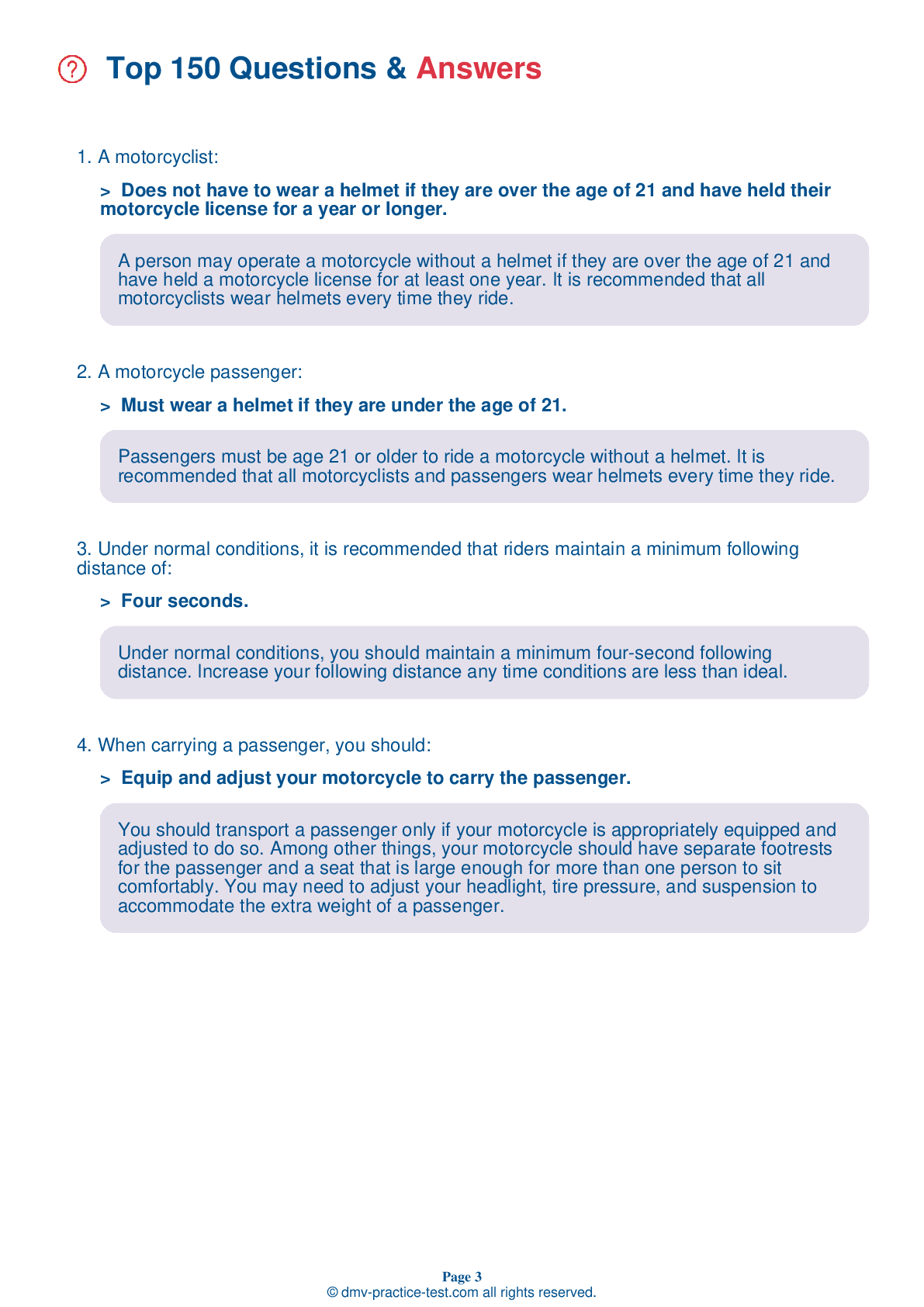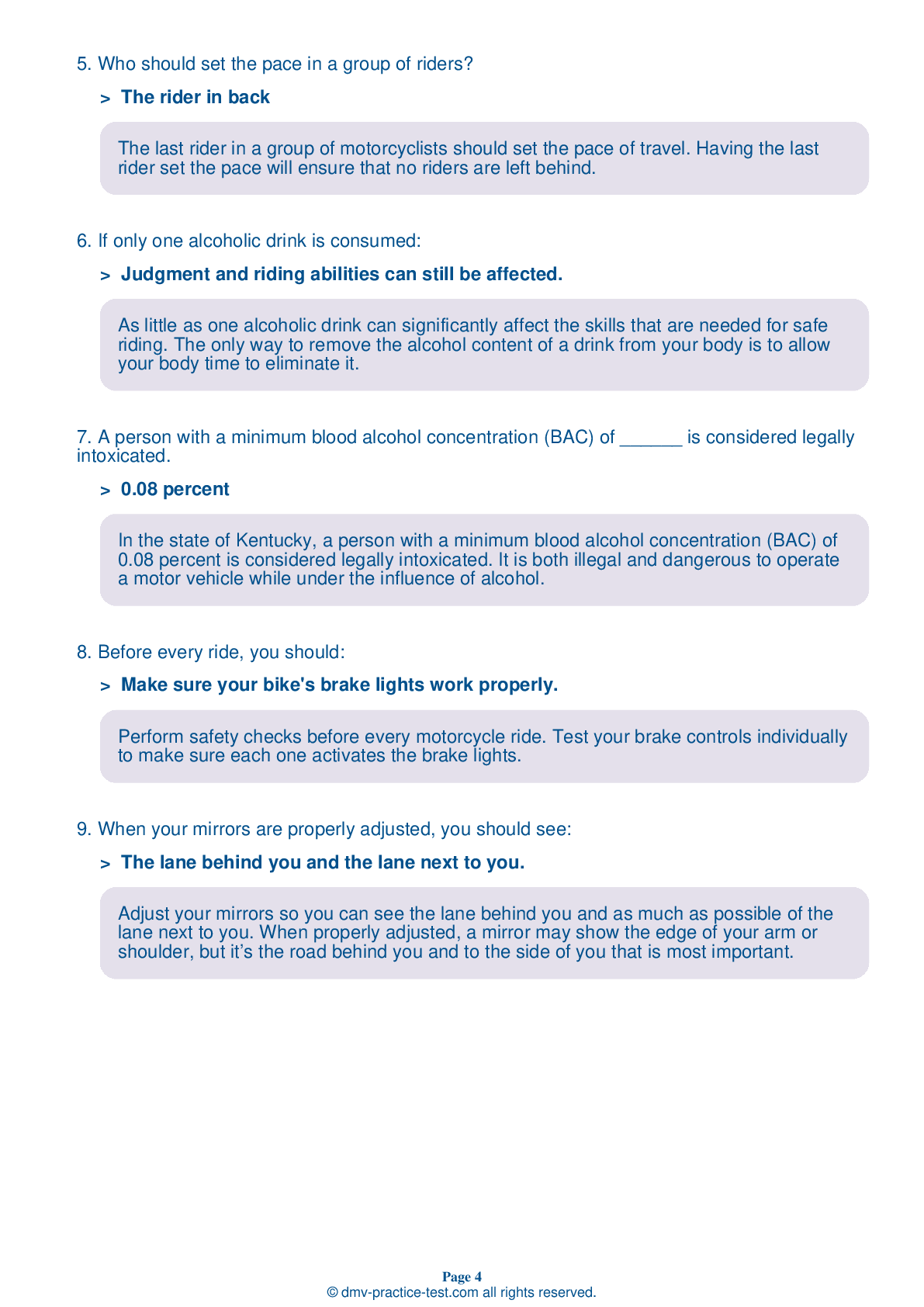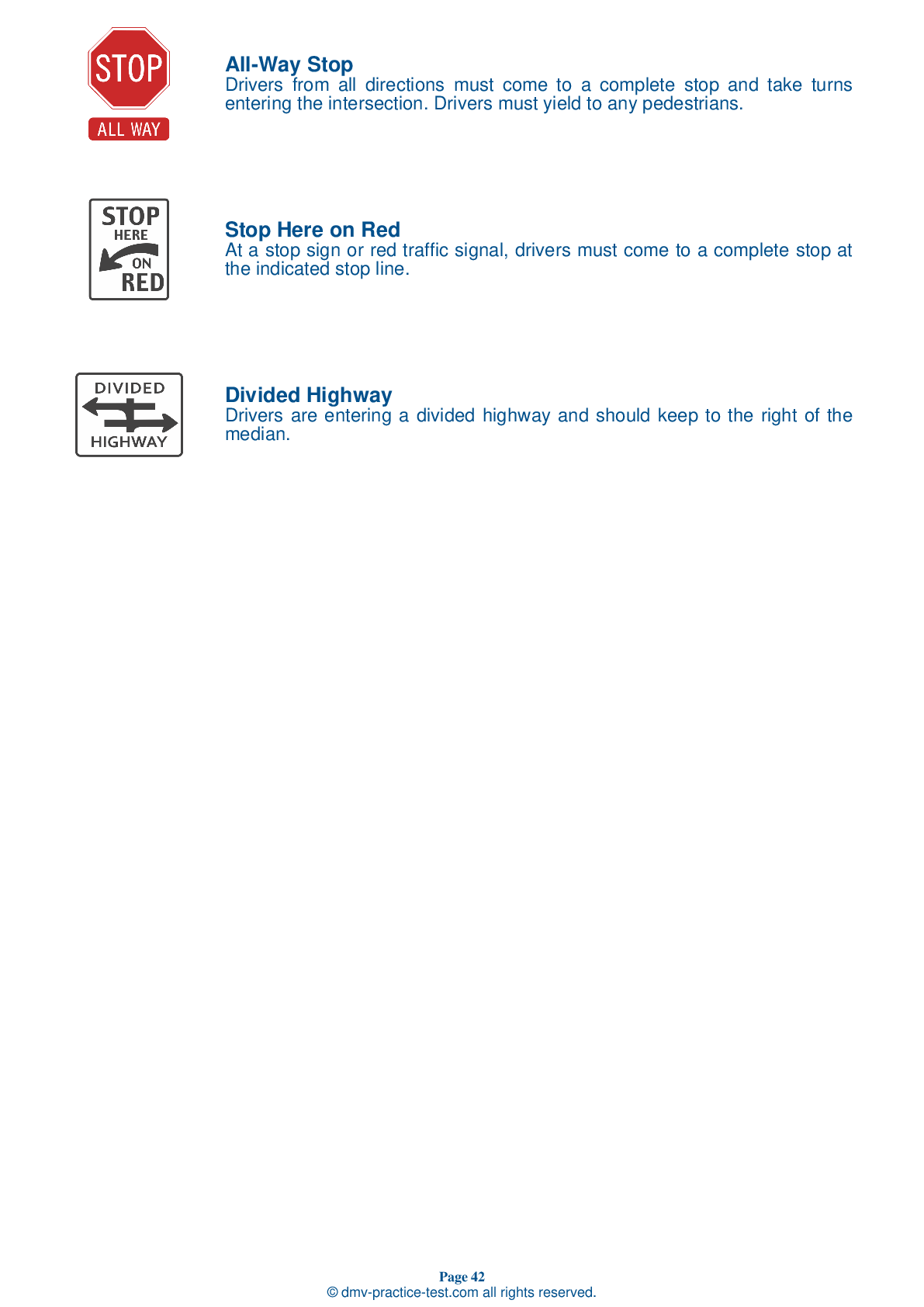Motorcycle Test | License KY 2025 | FREE Online Practice! #4 Page 4 of 4
Take this FREE motorcycle test (license in KY 2025) to check your knowledge of the road rules. To improve your results, download a motorcycle handbook online, study theory, and practice for free on our website. Still worried about how to get a motorcycle license in Kentucky in 2025? Check our website for more sample tests, train as much as possible, and boost your grades!
22 . When approaching a blind intersection, riders should:
When approaching a blind intersection that is controlled by a stop line or stop sign, you must first stop where indicated. You may then edge forward and stop again just short of where the cross traffic lane meets your lane. From that position, lean your body forward and look around buildings, parked cars, or bushes to see if anything is approaching. Make sure your front wheel stays out of the crossroad while you are looking.
23 . If you must brake and swerve to avoid a hazard, you should:
If you must brake and swerve to avoid a hazard, you should perform both actions separately. Brake then swerve, or swerve then brake. Do not do both at the same time.
24 . Your lane position should:
A properly chosen lane position should help you to see others and be seen by them. Avoid riding in another driver's blind spot for a long period of time.
25 . When riding, the best sitting position:
When riding, you should be seated in a posture that allows you to use your arms to steer rather than to hold yourself up. You should not have to stretch to reach the handgrips and your arms should be slightly bent when holding them. You should keep your knees against the gas tank to maintain your balance.
26 . Mechanical turn signals are not required to be on a motorcycle if:
In Kentucky, a motorcycle is required to have turn signals if they were part of the original factory equipment for that model.
27 . When passing another driver, you should:
Get out of another vehicle's blind spot as quickly as possible. When passing another vehicle, you should move into the passing lane and accelerate past the vehicle.
28 . You should ride with your headlight on:
Riders should use their headlight at all times. An activated headlight is the best way to help other road users see them. During the day, a motorcycle with its headlight on is two times more likely to be noticed than a motorcycle with no headlight.
29 . When choosing clothes for riding, which of the following is not a good choice?
To protect yourself against injury, you should wear a DOT-compliant helmet; face or eye protection; a jacket and long pants made of sturdy material; boots or shoes that are high and sturdy enough to cover and support your ankles; and gloves made of durable material.
30 . When checking tires before a ride, you should look at all of the following except:
Before each ride, you should check the air pressure, tread, and general wear of your tires.
See the exact questions that will be on the 2025 Kentucky DMV exam.
99.2% of people who use the cheat sheet pass the FIRST TIME
Jeneen was tired of paying $5/gallon. She got herself a scooter that required the motorcycle license. She studyed the motorcycle test cheat sheet and passed her test the next day!
Christopher tells us how he knew nothing prior to obtaining the motorcycle study guide, and he only got one question wrong because he clicked on the wrong answer by mistake.



